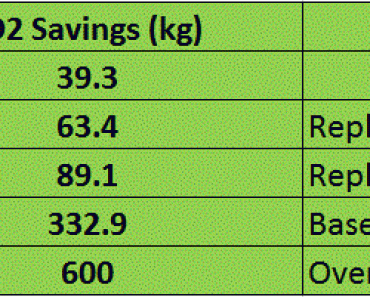In everyday life, we come across phrases such as:
Easy come, easy go,
Penny wise, pound foolish and all good things come to an end.
For many it would be surprising to discover that these phrases have their roots in scientific subjects. There are certain defining principles in many subjects that transcend disciplines. They are laws that are applicable across several fields i.e. they are universal. And so it doesn’t matter if one is studying economics, engineering, sociology, law or medicine, these laws are equally enlightening for everyone.
Among such universal laws are the following.
- Law of diminishing returns
- Second law of thermodynamics
- Newton’s third law of motion
For any keen student, these laws will help broaden their horizon and increase their understanding of the nature of the world.
Law of Diminishing Returns
The law of diminishing returns has its origins in the field of economics. It simply describes a phenomenon where “A constant increase in one entity consequently results in an increase but a declining increase in the other”.
To illustrate by way of example imagine the following scenario. You have a field on which you grow crops. After the first year, you decide to improve the yield. You double your investment on your inputs i.e. buy better seeds, use better fertilizers, use crop dusters, and better irrigation equipment etc. chances are that your produce might double. Going along the same idea, you quadruple the investment next year. The question is, would your yield quadruple? Possibly not.
Similarly, as you keep increasing your investments, the gains you achieve become increasingly marginal. This is law of diminishing return in action. Another example is that of football clubs, where the increase in wage bill does not equate with a linear increase in the quality of sports.
In mathematical terms it is called an asymptotic rise. There are numerous examples of Law of diminishing returns at work particularly when observing social behaviour. Not many phenomena in real life and nature are linear but many do follow an asymptotic increase (i.e pattern of diminishing return). Many examples of this law playing itself out are found in the field of physics. For example the rate of temperature rise when heating. The Pareto principle or 80-20 rules is another manifestation of this law.
Second Law of Thermodynamics
The Second law of Thermodynamics is a mystery that has fascinated the most brilliant minds of our time and of yester years. By unravelling the domain of this law, questions about our reality are answered. It describes not only how our universe came into existence but also gives a clue to how it will eventually seize out of existence.
In simple terms, the second law of thermodynamics states that “Entropy will always increase”
Although this law can be defined in a small sentence, but it packs powerful conclusions. Entropy is a measure of disorder in a system. Therefore the law suggests that in the natural order of things, disorder always increases.
For example, leaving to its mercy, your room gets cluttered with time rather than de-cluttered. Bunch of wires are likely to get tangled than untangled. This increase in the disorder is the way events naturally proceed unless a force or an agent is used to reverse or stem the trend.
A good example from physics is as follows. We know that heat travels from a cold body to a hot body. The refrigerator is an example where energy is used to reverse the natural order of things. Heat is further removed from cold objects and dumped into a warmer atmosphere.
It is a fascinating law because scientists have been challenged in mathematically proving it. Students of law would be well aware that a negative premise is hard to vindicate. Second law of thermodynamics is a double negative and thus not only hard to justify but harder even to comprehend.
Nonetheless we see the law playing out in front of our very eyes all the time. We observe it everyday when witnessing soil erosion, resource depletion and structures rusting. Based on profound effect this law has had the progress of our civilization, the band Muse named their album “The second law”
The Third law of Motion
The third law of motion has its origins in the field of kinematics. It was first published by Isaac Newton in Mathematical Principles of Natural Philosophy (1687).
“To every action, there is an equal and opposite reaction”
The law can be stated simply, but the connotations are deep. It takes us a while to fathom that when a ball hits a wall, it is akin to wall hitting back the ball. Our when our shoes push the ground as we walk, the ground pushes us back with an equal force. This may feel counter intuitive, so to wrap our head around this is not an easy task but once this exercise is done, it alters our way of thinking and provides us a much needed alternate perspective.
The third law of motion is not just relevant to the field of kinematics. It is roots from the cause and effect logic. It is the through this law that we can understand many things in nature and even social sphere. For instance common saying violence begets violence, hatred leads to hatred is just another manifestation of this law etc. To sum up, the third law of motion creates a balance in our way of thinking.
So next time you come across phrases (mentioned below) try matching their origin with the corresponding scientific law.
-
There ain’t no such thing as a free lunch
-
All good things must come to an end
-
The juice is not worth the squeeze
-
Easy come easy go
-
As you sow, so shall you reap
-
The gain is not worth the pain,
-
Penny wise, pound foolish,
-
It all ends the same







